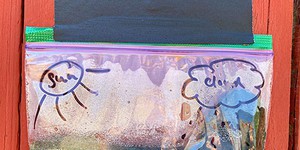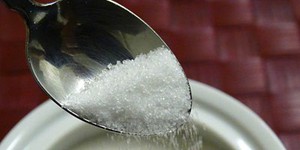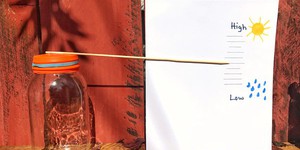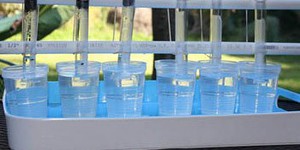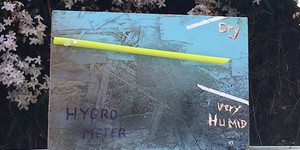Eleventh Grade, Weather & Atmosphere Science Experiments (36 results)
Fun science experiments to explore everything from kitchen chemistry to DIY mini drones. Easy to set up and perfect for home or school. Browse the collection and see what you want to try first!
Everybody talks about the weather, but nobody does anything about it.
- Charles Dudley Warner
Weather and atmospheric science offer lots of opportunities for interesting explorations. It's a satisfyingly complex area, with lots of online resources so you can make your project as easy or as advanced as you want. And when you're done, you'll have a science fair project everyone can talk about.
|
Select a resource
Sort by
|
Have you ever noticed that on a hot day, it's more comfortable to wear a light-colored shirt than a dark one? Or that it's cooler in a park than walking down a street? This happens because different surfaces absorb and reflect heat in different ways. Urban heat islands are parts of cities where man-made surfaces like pavement and buildings replace natural surfaces like grass and trees. In this project, you will use temperature and satellite data to see if certain areas in a city have higher…
Read more
STEM Activity
100 reviews
Are you eager to understand how everyday items work, or interested in making useful objects and instruments yourself? Have you ever imagined you could build your own thermometer? In this activity, you will make a liquid thermometer to track how temperatures vary with location, indoors or outdoors. What will turn out to be the hottest spot in your home? What about the coolest? Your very own homemade thermometer will be able to tell you!
Read more
STEM Activity
48 reviews
Have you ever wondered where the rain that falls from the sky comes from? You might say the rain falls from the clouds, but what are clouds and where do they come from? All these questions and many more can be answered by looking into how water moves on land and in the atmosphere, which is described in the water cycle. In this activity, you will investigate some of the processes that make water move in and out of the atmosphere by making a miniature water cycle model inside a plastic bag.
Read more
On a windy day it is hard to keep your hat on! The power of the wind can even be strong enough to power large wind turbines to make electricity! In this experiment, find out how you can make your own instrument to measure the speed and power of the wind. How does it work?
Read more
STEM Activity
20 reviews
Have you ever added a spoon of sugar to your tea and wondered why it disappeared? Where did it go? The sugar did not actually disappear—it changed from its solid form into a dissolved form in a process called chemical dissolution. The result is a tea-sugar mixture in which individual sugar molecules become uniformly distributed in the tea. But what happens if you increase the amount of sugar that you add to your tea? Does it still dissolve? In this science activity, you will find out how…
Read more
STEM Activity
31 reviews
Have you ever seen a weather forecast on TV? If so, you might have noticed the letters "H" and "L" moving around on the weather map. They are often referred to as zones of "high pressure" (H) and "low pressure" (L). The pressure they are talking about is the atmospheric pressure. Changes in air pressure can forecast short-term changes in the weather. But how do you know if the air pressure changes, or if it is high or low? Scientists have developed an instrument called a barometer that can…
Read more
Tornadoes are a very destructive weather phenomenon that is very hard to predict. Certain weather conditions can indicate if a tornado is likely to occur, but the path that the tornado will take is completely unpredictable. Storm chasers are people who chase tornadoes and try to capture them on film or video. They often have a sense of predicting where and when a tornado will strike, but the best images are also due to a bit of luck and survival instinct. Even though tornadoes are…
Read more
Earth's atmosphere, the ocean of air that blankets the planet, is mostly nitrogen and oxygen, with small amounts of other gases. How much oxygen is present in air at sea level? In air high up in the Appalachians or Rockies? Atop Mount Everest? How much oxygen is present in the air you breathe? Here's a project that shows you how to measure the percentage of oxygen in an air sample.
Read more
STEM Activity
14 reviews
Does your hair go frizzy during "April showers," when the weather turns damp? Strands of hair can relax and lengthen when the humidity (or the amount of water vapor in the air) increases, and then contract again when the humidity decreases. In fact, the rate of change in the length of hair strands is so dependable that they can actually be used as the basis for a hygrometer, a device that measures the humidity level in the air.
Read more
Does your hair go crazy when the weather turns damp? Did you know that strands of hair can relax and lengthen when the humidity increases and then contract again when the humidity decreases? In fact, hair strands can be used as the basis for a hygrometer, a device which measures the humidity level in the air. Will a hygrometer help you to predict bad hair days(!) or can you use it to help predict the weather?
Read more
|
Explore Our Science Videos
Can You Charge Your Phone with a Potato?
How to Make Slime
What are the Chances? – A Probability STEM activity






